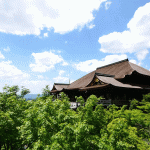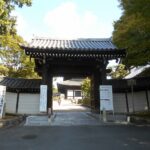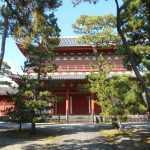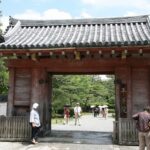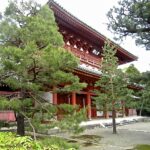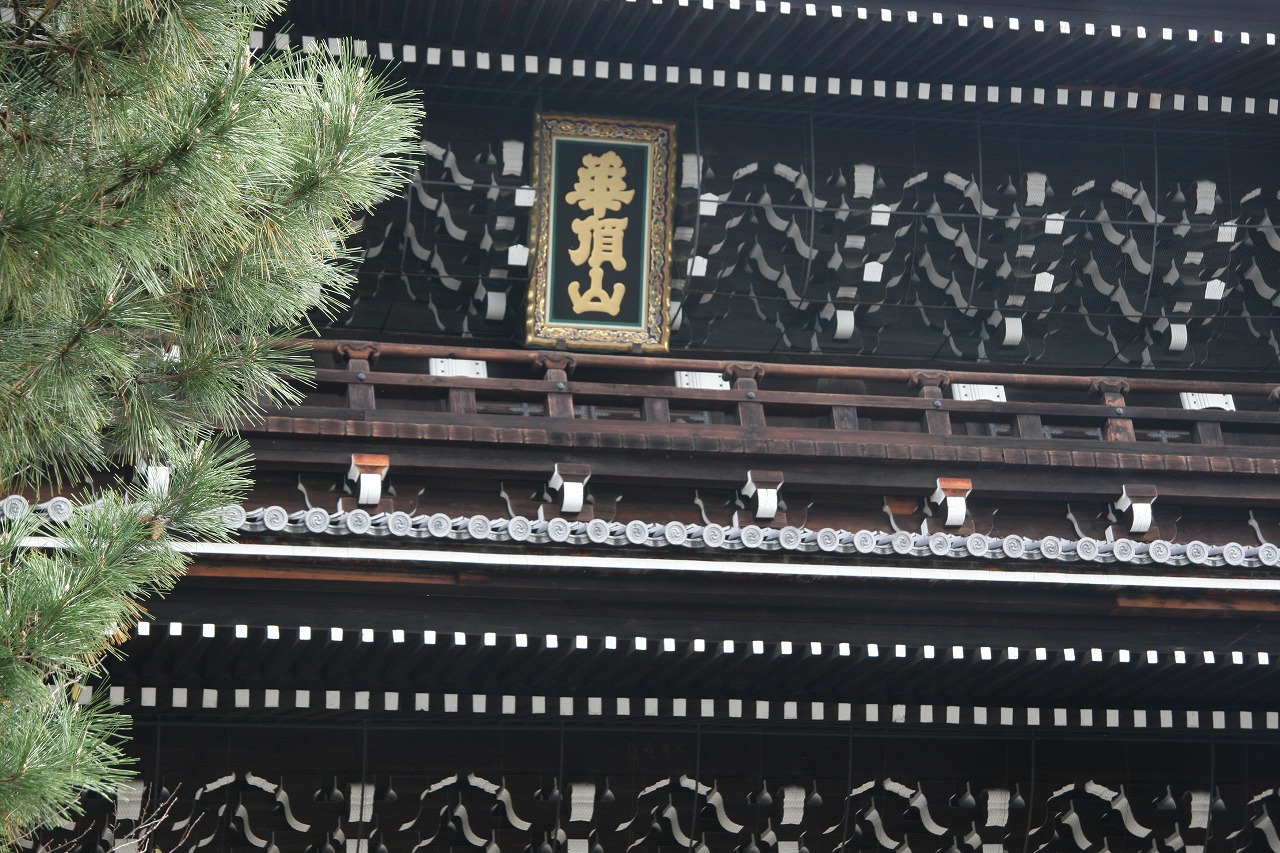
ページの目次
Chion-in Temple(知恩院)
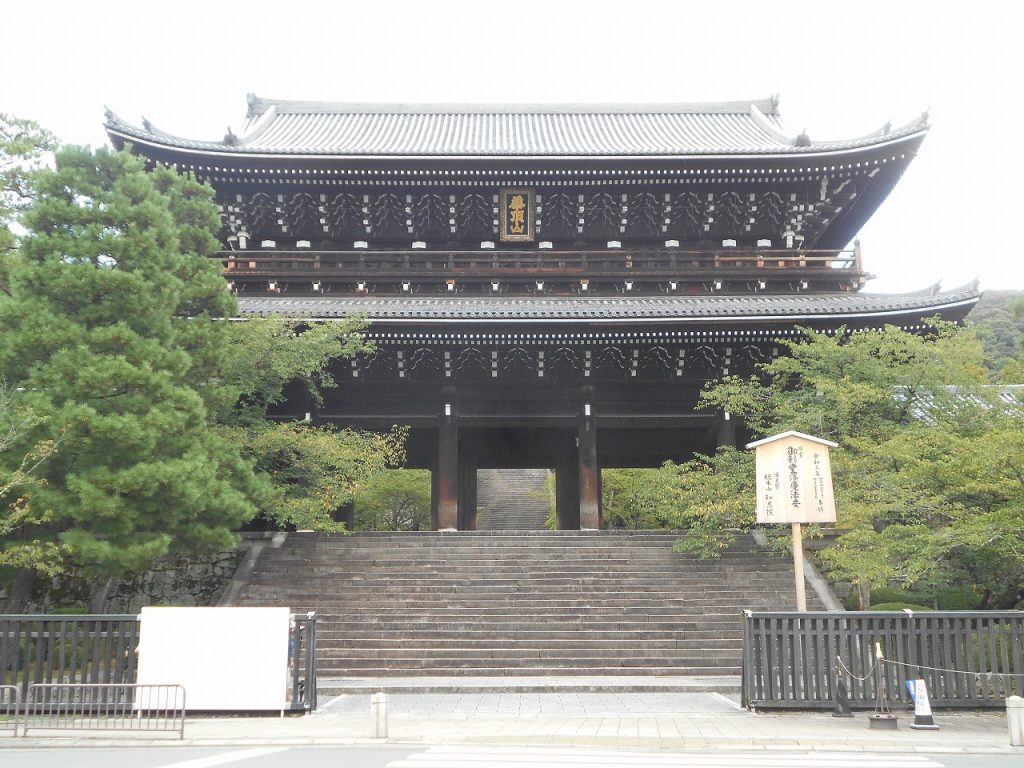
1. Location-Access
This temple is located in the foot of Kachosan mountain at Higashiyama area, Kyoto.
It takes 20 minutes from Kyoto station to Chion-in mae by city-bus #206,ten-minute walk, or from Kyoto sta.- karasuma-oike to higasiyama sta. by subway.
(この寺は東山エリアの華頂山のふもとに位置する。
市バス206系統 京都駅→知恩院前(15分),徒歩10分
地下鉄 京都駅→烏丸御池→東山駅、徒歩8分)
2. Who was built this temple?
1) In 1175, this temple was built by priest Hounen, jyodo Sect and the principality is Hounen statue at main hall and Amida Nyorai at Amida-do.
(法然が1175年浄土宗を創立し、本尊は法然上人像(本堂)、阿弥陀如来(阿弥陀堂)である。)
2) In 1207, Kamakura period, Priest Hounen and Jyodo Sect were oppressed by Emperor Gotoba and Enryaku-ji temple and was gone and died.
(1207年、鎌倉時代、法然と浄土宗は後鳥羽上皇と比叡山に弾圧され、流され死去した。)
3) In 1604, Tokugawa Sgogunate enlarged this temple in order to control Gosyo and understand Jyodo’s thought..
(1604年、朝廷の中心であった御所を監視する目的と浄土宗の教えが分りやすいことから
知恩院を拡大していった。)
4) In 1633, Sanmom and Seishi-do were burnt down, and was rebuilt in 1641.
(1633年、火災で三門、勢至堂が焼失したが、1641年すべてが再建された。)
5) We can divide three areas, such as Gedan(bottom area), Chudan(middle area), Jodan(top area) in this temple. Gedan is Sanmon and Main buildings and Chudan is Hondo(main hall) supported by Tokugawa Shogunate.
Jodan remains Netsushi-do and Hounen corridor as originally opened.
(この寺は、上段、中段、下段の3区域に分けられる。下段は三門、塔頭寺院、中段は本堂の大伽藍で徳川幕府の援助があった。上段は開創のままで、勢至堂や法然廟がある。)
3. What is this temple famous for ?
1) Sanmon (National treasure) 三門(国宝)

① The Sanmon gate of kyoto are Nanzen-ji, Ninna-ji and Chion-in temple.
Sanmon of Chion-in is known of the “three achievement of enlightment, which represent “Vacuity”, “No form” and “Natural”. It was constructed by the donation from 2nd shogun, Hidetaka Tokugawa in 1621.
(京の三大門は、南禅寺、仁和寺、知恩院である。知恩院の三門は三解脱門といい、「空・無想・無作」の意味を持っている。1621年徳川二代将軍、秀忠公の寄進によって建立された。)
② These Sanmon of this temple have the tallest height for wooden gate in Japan. The width is 26.6m and the height is 23.8m from the foundation stone to the roof.
The typical shape of Sanmon is the Gakensanko-nikainiyu-mon in Irimoya-Tsukuri style and clay tile roofing. The frame of Kacho-san set up in the front of the temple three gates was painted by Emperor Reigen.
(三門は木造の門としては日本一の高さを誇る。一階の桁行は26.6m、礎石より二階棟瓦頂部まで23.8mもある。入母屋造り本瓦葺の五門三戸二階二重門である三門形式である。三門正面に掲げる華頂山の額は霊元天皇の筆である。)
③ Entering the temple three gates, you may see two kinds of slopes which is called Otokozaka and Onnazaka. On the Otokozaka there are steep stairways.
On the other hand, the Onnazaka has more gentle stairways butslightly longer slope.
(三門をくぐり、境内で向かう階段には、男坂と女坂の2つの坂がある。男坂は急な階段が続き、女坂はほんの少し遠回りになるが、緩やかな階段が続く。)
2) The whole view from the Kacho-san 華頂山からの景色
You may enjoy the nice view of red leaves covering the whole mountain from the Kacho-zan of Higashiyama. On the long way to Emperor’s grave, you may also enjoy the red leaves by looking down the whole temple grounds with light up.
(東山の華頂山から山内全体まで広範囲に紅葉を鑑賞でき、特に国宝「三門」の周辺や
友禅苑の池の周りは見事である。御廟などに通じる長い石段では、広大な境内を見下ろしながらライトアップで紅葉を楽しむことができる。)
3) Joya-no-kane on New Year’s Eve 除夜の鐘
① People visit temples to ring the bells to make their hearts pure for New Year. We don’t know exactly how it started, but some people think that this custom came from China.
(新年を迎えて心を清らかにするため人々は、寺へ鐘を聞きに参拝する。詳しいことは分かっていないけど、中国が起源だと言う人もいる。)
② Chion-in temple in Higashiyama hard has one of the three biggest bells in Japan.
The large bell is 70 tons weight, 3.3m height and 2.8m dia.and is ring by 17 priests at time. Visitors cannot ring the bell, but they can experience special feelings watching the priest’s prayers.
(東山区の知恩院の鐘は、日本三大梵鐘の一つとされている。重さは70tあり、僧侶17人掛でつく。参拝者がつくことができないが、僧侶が礼拝するなどして厳かな雰囲気が漂う。)
4. What is the highlight?
1) Miei-do (National Treasure) 御影堂
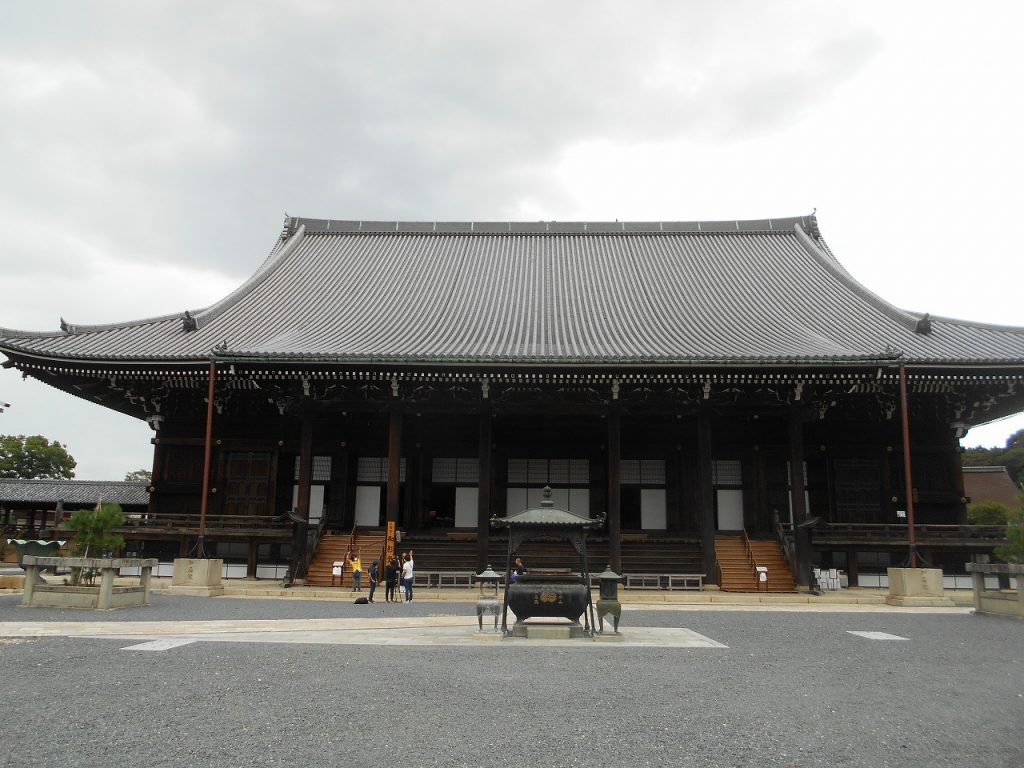
After climb up slope, we can go the square in Miei-do garden.
Miei-do which enshrine Hounen, is called “Oudono” or “Hondo”.
(坂を上りきると御影堂のある広場へ出る。法然上人の御影をまつる「御影堂」は大殿とも呼ばれる本堂である。)
2) Hojyo-teien/Yuzen-en 方丈庭園(名勝)/友禅苑
There are two gardens, Hojyoteien and Yuzenen in this temple.
Hyojyoteien is at the back of Miei-do, made by Enshu kobori and priest gyokuen.
Hojyo architecture, Nature in Higashiyama and Hojyo garden are integrated.
On the other hand, Yuzen-en is two kinds of garden, Karesansui of mainly sand and stone and spring-water of Higashiyama.
(知恩院には、「方丈庭園」と「友禅苑」の2つの庭園がある。御影堂の裏手にある「方丈庭園」は小堀遠州と僧玉淵の作である。方丈建築と東山の自然と庭園が一体になっている。
「友禅苑」は、砂と石をメインとした枯山水と東山の湧き水を引き入れた庭園である。)
3) Tahou-to 多宝塔
This pagota is the highest building and is called 7,520,000 spirit pagotas,built in 1958.
(建設の中で高さがあり、「七百五十万霊塔」とも呼ばれている大きな塔は、1958年建立した)
4) Amida-do 阿弥陀堂
Amida-do was built in 1910, fell into ruin in 1910, Meiji period.
(明治年間に建てられた。荒廃が進み1910年に再建。)
5) Kara-mon (Important cultural property) 唐門
Kara-mon is called Chokushi-mon, built in 1641. The gate is carved as such as poeny arabesque, an old man riding a carp fish.
(「勅使門」と呼ばれた大門は、牡丹唐草や鯉魚に乗る老人が細かく彫刻で、1641年建立された。)
6) Hounen shonin-zo 法然上人像
There is Hounen satue on the way to Kyozo from Miei-do hall.
(御影堂から堂内にある経蔵の途中にある。)
7) Kyodo (Important cultural property) 経蔵
Kyodo staue at east of Miei-do was built in 1621 as same as Sanmon.
Inside, there are Kano school paintings one the wall and ceiling.
(御影堂の東側にある経像は三門と同じ1621年に建てられた。内部には、壁や天井に華やかな狩野派の絵画がある。)
8) Seven of Chion-in temple 知恩院の七不思議
Uguisubari-rouka, Coffin of plain wood, Forgotten umbrella, Car staring three sides, Big dipper, Cucuber stone, are said as seven mysteries of Chion-in temple.
(鴬張りの廊下、白木の棺、忘れ傘、抜け雀、三方正面真向き猫、大杓子、瓜生石が知恩院の七不思議として伝わる。)
9) Seishi-do (Important cultural property) 勢至堂
Seishi-do is the birthplace where priest Hounen to be spread the teaching the priest.
(法然上人の教えを広められ禅房の地で知恩院発祥の地である。)
